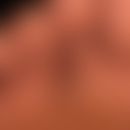Synonym(s)
HistoryThis section has been translated automatically.
DefinitionThis section has been translated automatically.
A subacute or chronic infectious disease of the cutis and hypodermis occurring worldwide, which has become very rare in Europe but relatively common in developing countries, caused by pathogens of the Sporotrix schenkii complex (dimorphic fungi). Also commonly referred to as injury mycosis.
You might also be interested in
PathogenThis section has been translated automatically.
The dimorphic fungus Sporothrix schenckii (Sporotrichon schenckii) is a soil saprophyte that lives in a climate with an average temperature of 20-25C° on rotting wood and dying plants. In this respect, the infection occurs mainly in rural populations.
Besides Sporothrix schenckii sensu stricto, the Sporotrichon complex includes 4 other species:
- S. albicans
- S. brasiliensis
- S. globosa
- S. mexicana
Animals also represent a reservoir of pathogens. Starting from dogs, cats, horses, muskrats, pigs, birds, reptiles, infection can occur through scratch or bite injuries (zoonosis).
ClassificationThis section has been translated automatically.
A distinction is made according to the form of propagation:
Occurrence/EpidemiologyThis section has been translated automatically.
Worldwide. North America, Japan, mainly tropics and subtropics, only sporadically in Europe. The only epidemic to date occurred in South Africa in the mid-20th century among mine workers who became infected with mine timber (infested with Sporothrix schenckii).
EtiopathogenesisThis section has been translated automatically.
ManifestationThis section has been translated automatically.
Occurs mainly with gardeners, farmers or fishermen. Common and complicating in immunocompromised individuals.
LocalizationThis section has been translated automatically.
Hands and feet, rarely face, only very occasionally trunk and back.
ClinicThis section has been translated automatically.
Incubation period: days to months after a frequently unnoticed injury (injury mycosis: e.g., thorn injury - in American: rose gardener's disease). (e.g. thorn injury - in American: rose gardener's disease), multiple, bluish-red or brown, 0.2-10.0 cm large, smooth or scaly, sometimes also verrucous papules, plaques and nodules with a tendency to ulceration or with discharge of purulent secretion form in a lymphogenically transmitted infection, usually with few symptoms, arranged in chains along the lymphatic channels (lymphogenic spread). The skin lesions may coalesce into planar nodular conglomerates.
In the fixed cutaneous form, isolated, 1.0-6.0 cm (or larger), minimally symptomatic, verrucous plaques, nodules, or ulcers with peripherally accentuated marginal rims are found at the site of entry and progress centrifugally if untreated.
Infestation of the musculature and bones is possible but rather rarely described, and occurs mainly in immunosuppression.
HistologyThis section has been translated automatically.
Mixed-cell inflammatory reaction of the dermis with lymphocytes, granulocytes, histiocytes and plasma cells Occasionally smaller and larger abscesses. With increasing duration of the infection an increasing granulomatous inflammatory character develops with histiocytes, plasma cells and giant cells. In HE sections, so-called "asteroid bodies" can be detected in approx. 30% of cases. These consist of one or more fungal cells in the centre surrounded by a ring of spine-like, red, eosinophilic extensions (see Splendore-Hoeppli phenomenon). Fungal cells are usually only found in the acute phase of infection. The cells of S. schenckii are 2-10 µm in size in the tissue, both yeast-like round to oval, and elongated (the elongated elements are also called "cigar bodies"). Detection by Grocott staining is recommended.
DiagnosisThis section has been translated automatically.
Clinic with lymphogenic arrangement of the lesions.
Histology: often multiple sampling is necessary to detect the pathogens.
Easy cultivation of the pathogen at room temperature from smear of secretion or biopsy. Flower-like arranged conidia on hyphal stems (margarite forms) occur.
Differential diagnosisThis section has been translated automatically.
Internal therapyThis section has been translated automatically.
Itraconazole (e.g. Sempera) 400-600 mg/day p.o. over at least 6 weeks; to prevent recurrence, 100-200 mg are given over several months (guidelines of the American Society for Infectious Diseases). Itrakonazole has proven to be highly effective.
In extracutaneous forms: Amphotericin B 0.1 mg/kg bw/day, increasing to 1.0 mg/kg bw as an infusion.
Alternatively Terbinafine: The clinical efficiency could be shown in 2 studies (dosage: 500 mg/day p.o.). Long-term therapy 250mg/day p.o. up to 42 weeks.
Alternative Ketoconazole: The results of the ketoconazole therapy were rather disappointing, only single cases showed a response.
Remark: Previously, potassium iodide therapy was the treatment of choice: Potassium iodide is applied in the form of a saturated aqueous solution. The initial dose is 0.5-1.0 ml 3 times/day p.o. and is increased dropwise to a total dose of 3-6 ml 3 times/day. The mixture is more palatable if it is given together with milk. The therapy should be given one month beyond clinical remission.
Progression/forecastThis section has been translated automatically.
LiteratureThis section has been translated automatically.
- de Beurmann CL, Gougerot H (1912) Les sporotrichoses. F. Alcan, Paris
- Eisfelder M et al (1993) Experiences with 241 sporotrichosis cases in Chiba/Japan. dermatologist 44: 524-528
- Gottlieb GS et al (2003) Disseminated sporotrichosis associated with treatment with immunosuppressants and tumor necrosis factor-alpha antagonists. Clin Infect Dis 37: 838-840
- Koga T et al (2003) Therapeutic approaches to subcutaneous mycoses. At J Clin Dermatol 4: 537-543
- Kohler A (2000) Sporotrichosis--fixed cutaneous and lymphocutaneous form. dermatologist 51: 509-512
- Lutz A, Splendore A (1907) Sobre uma mycose observada em homens e ratos (Contribuição para o conhecimento das assim chamadas sporotricoses). Rev Med São Paulo 10: 443-450
- Nenoff P (2010) Sporotrichose. In: Plettenberg A, Meigel W, Schöfer H (Hrsg) Infectious diseases of the skin, S. 199-200. Thieme Verlag, Stuttgart
- Nenoff P et al (2015) Tropical and travel-associated dermatomycoses. Part 2: Cutaneous infections through yeast pizzles. Molds and dimorphic fungi. Dermatologist 66: 522-532
- Orofino-Costa R et al (2017) Sporotrichosis: an update on epidemiology, etiopathogenesis, laboratory andclinical
therapeutics.An Bras Dermatol 92:606-620. - Ponnighaus M et al (2003) Sporotrichosis as the cause of a leg ulcer. dermatologist 54: 64-66
- Queiroz-Telles F et al (2003) Subcutaneous mycoses. Infect Dis Clin North Am 17: 59-85
- Restrepo A (1994) Treatment of tropical mycoses. J Am Acad Dermatol 31: 91-102
- Schenck RB (1898) On refractory subcutaneous abscesses caused by a fungus possibly related to the sporotricha. Bull Johns Hopkins Hospital 9: 286-290
- Secchin P et al (2017) Cutaneous Nocardiosis Simulating Cutaneous Lymphatic Sporotrichosis.
Case Rep Dermatol 9:119-129.
Incoming links (24)
Acladiosis; Arndt georg; Bridge scars; Cat scratch disease; Chromomycosis; Contagious ecthyma; De beurmann-gougerotsche disease; Dermatitis-arthritis syndromes; Disseminated sporotrichosis; Fixed cutaneous sporotrichosis; ... Show allOutgoing links (15)
Amphotericin b; Chromomycosis; Disseminated sporotrichosis; Ekthyma; Fixed cutaneous sporotrichosis; Itraconazole; Ketoconazoles (inci); Lympho-cutaneous sporotrichosis; Mucocutaneous sporotrichosis; Nokardiosis; ... Show allDisclaimer
Please ask your physician for a reliable diagnosis. This website is only meant as a reference.











